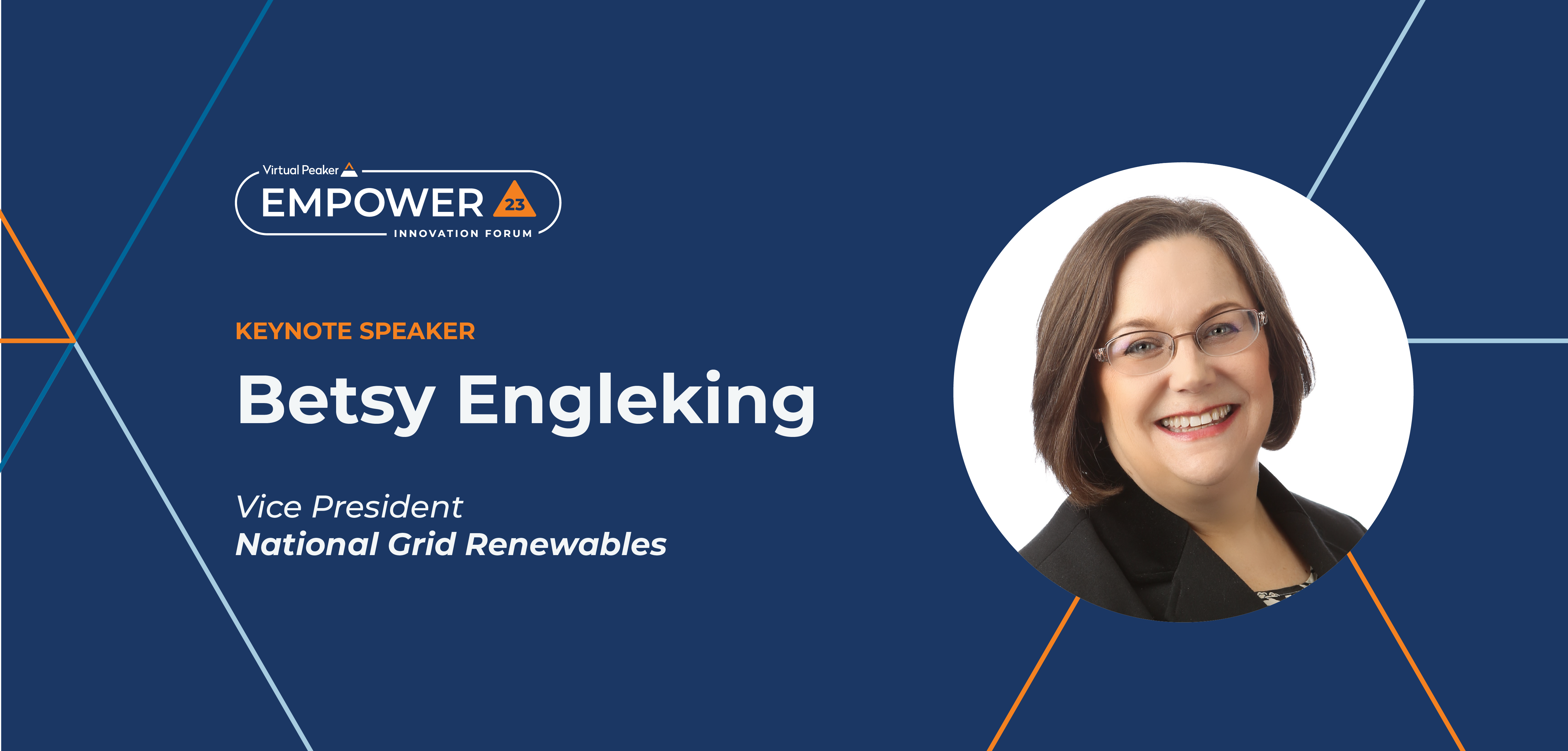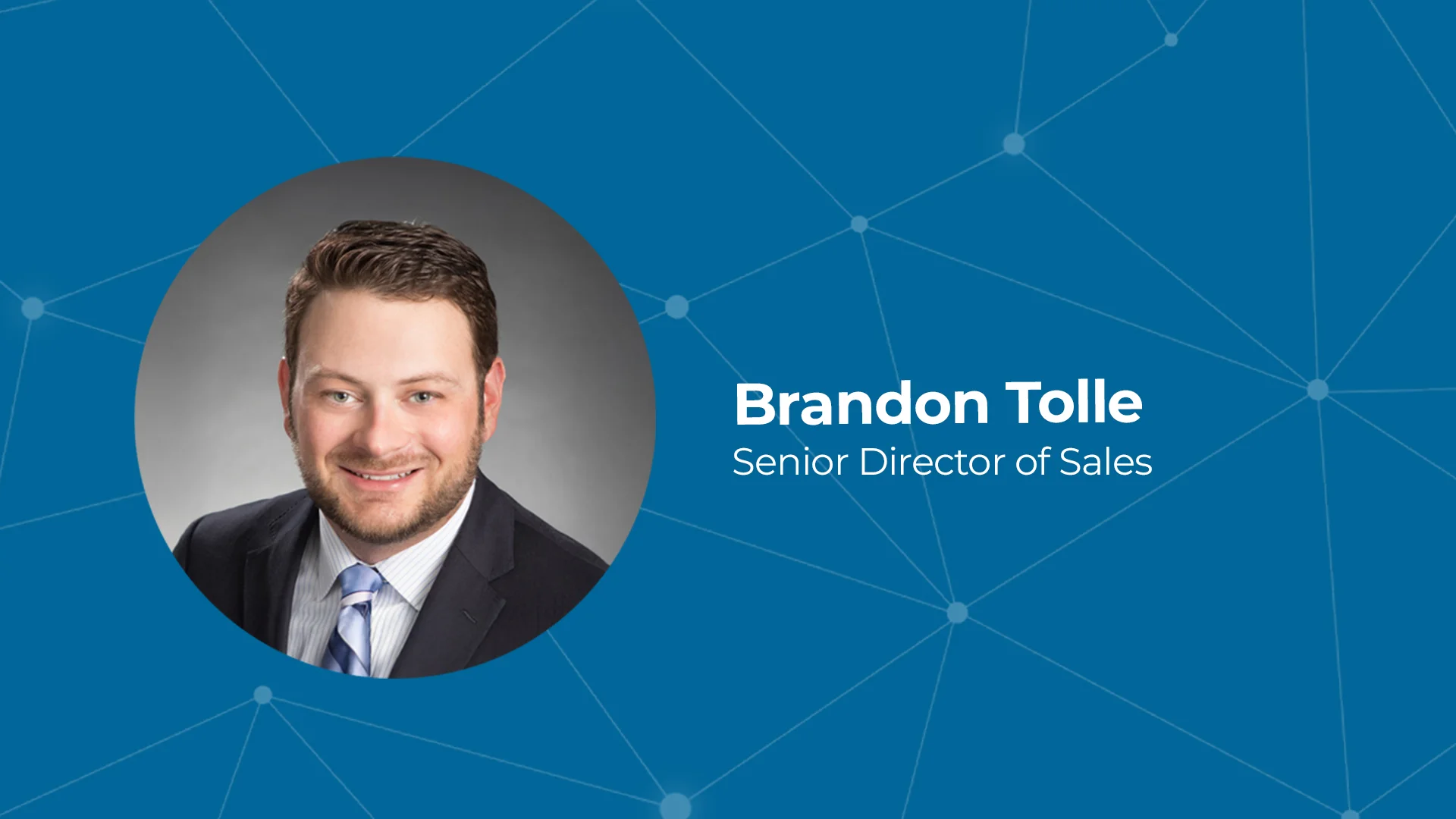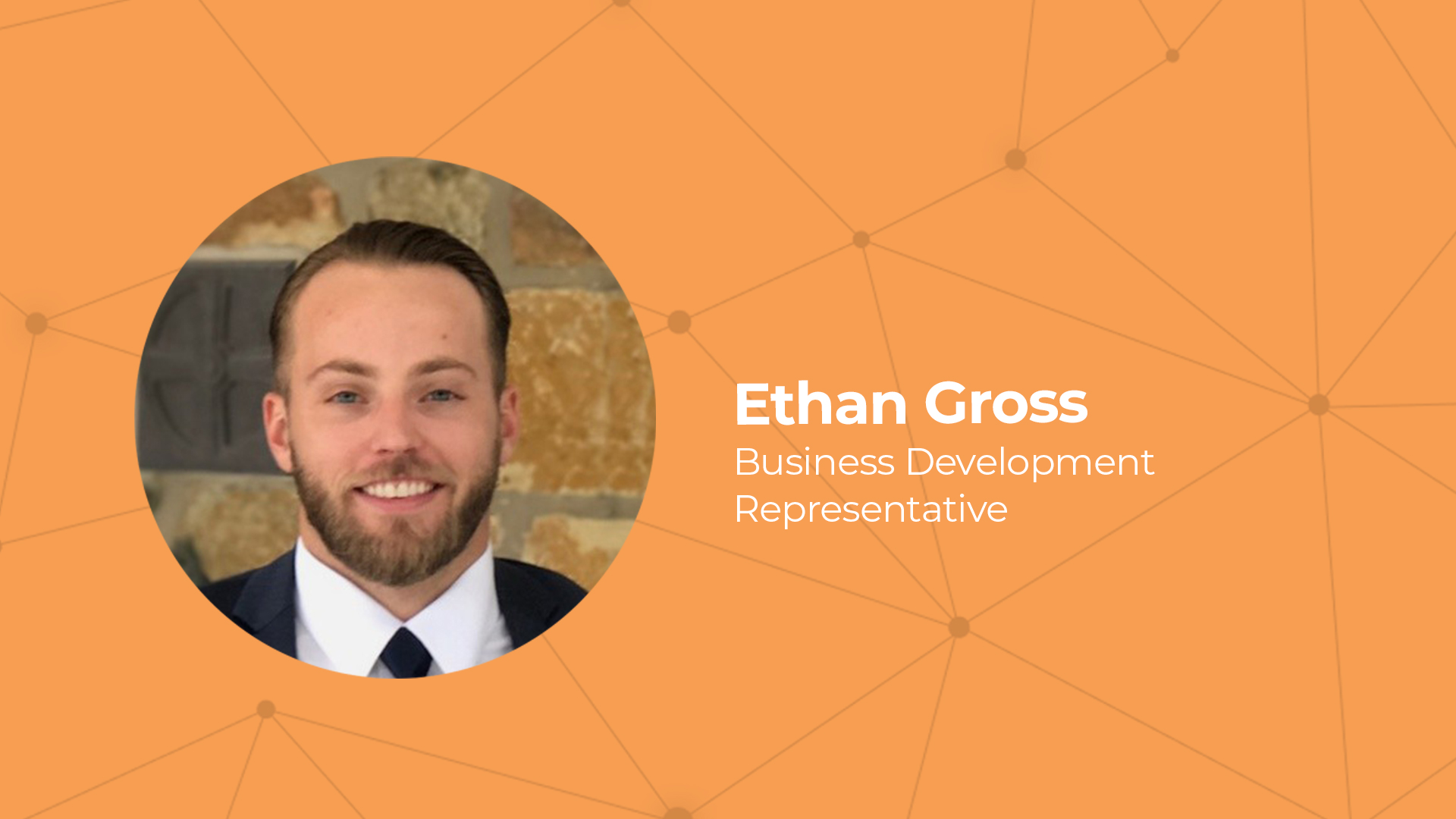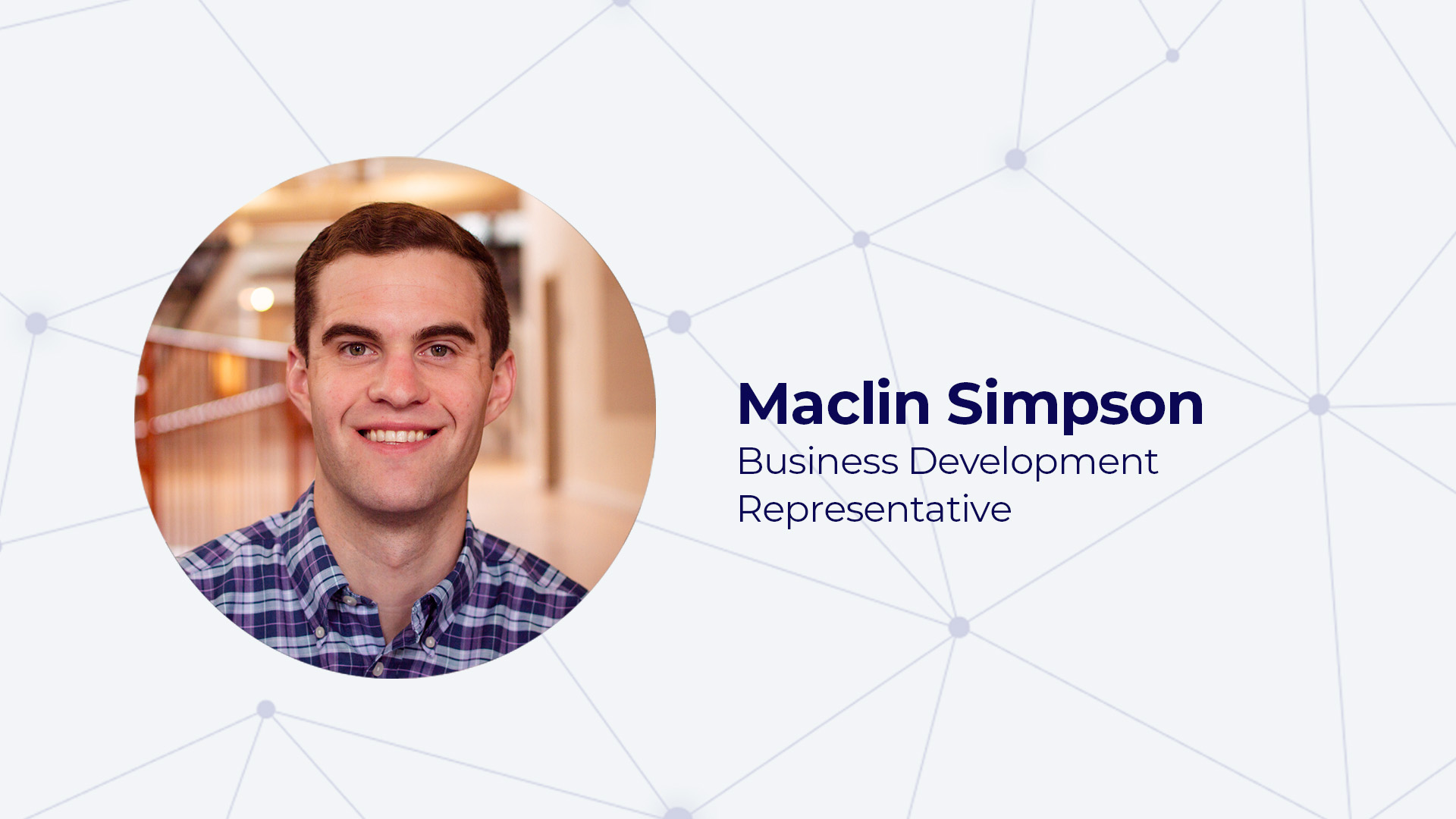Since 1988, Betsy Engelking has worked in the energy sector. She got her start working as a regulator at the Minnesota Public Utilities Commission before tenures at Great River Energy and Xcel. In January 2012, Engelking joined National Grid Renewables as Vice President where she currently leads the company’s policy efforts. As you might expect, Engelking has worn a lot of hats during her time in the industry from resource planning to identifying the potential of renewable energies in Minnesota and beyond. That’s why we invited Engelking to speak at our upcoming Empower Innovation Forum this November, where she will give a talk entitled “The Promise of Technology for Transmission & Load Balancing.”
Tell us a little bit about yourself. What got you into renewable energies and the clean energy transition?
Betsy Engelking: In 1988, I joined the Minnesota Public Utilities Commission. And it was a time when issues like energy efficiency and renewable energy were just at the forefront in terms of looking for widespread utility adoption; it was kind of an uphill battle. In that time, I passed a lot of Minnesota policies on renewable legislation. After that, I moved on to a large cooperative.
What can we expect from your keynote speech?
We’ll talk about the opportunity of using technology to create a more efficient delivery system as well as a better ability to direct what customers are demanding at different times and why they’re demanding them at those times.
Likewise, we’ll talk about incentives for IOU’s. Right now, we charge customers the same price whether they buy their power during the day or during the night or in the summer or the winter. We charge them the same price, no matter when they buy a kilowatt hour. And when you look at how so much of the electricity is based on market prices right now, that’s not the same as what it’s costing them to use it.
With the advent of smart meters, customers can actually see what it’s costing them to use electricity during the day and during the night and then price incentives that help them make better decisions. Appliances that allow you to, you know, set it on a delay so it can run in the middle of the night when you know energy is going to be cheaper.
Why are utilities moving toward renewable energy? Is it a regulatory necessity or an existential reality?
If you’re in Lebanon or something and the lights routinely go off for an hour, outages don’t bother you as much as when you’re in the U.S. Here you get a thunderstorm outage that happens once every three years, maybe more often now.
People just really go bonkers when you end up with these outages because we’re so good at making sure the system is reliable and there are contingencies. So I do think that utilities are naturally risk-averse about renewables, and mandates give them an opportunity to try some things that they wouldn’t have done on their own.
For many utilities, their biggest assets are retiring and their investment opportunities are reduced. And so, what do they want to do? Now they want to own and operate renewables because that’s their next big investment opportunity. In addition to, of course, the transmission and distribution that they already invest in.
Because of this, we’ve thought a lot about ways to change the incentives that utilities have. For example, instead of compensating them for all the energy that they sell, for every kilowatt hour they make money off of, they get a rate and that rate contributes to their total revenue requirement.
Do you think that things like the IRA, the Bipartisan Infrastructure Bill, or anything like that have influenced interest in renewables?
The Inflation Reduction Act (IRA) has influenced a ton of interest, to the point that we’re seeing investment in renewables and competition for renewables; it’s probably the highest point we’ve ever seen them. But back to transmission again. Most of those projects are never going to be realized because we have nowhere to plug them in. They want to send all this money to people but if you can’t plug in these projects to the grid you can’t build them. The one thing that I think we really need to focus on in terms of a national energy policy is building transmission.
Still, the cheapest kilowatt that you make is the one that isn’t used. So focus on energy savings as well as on being able to transmit electricity, particularly renewables, from more rural areas to bigger load centers. That’s what’s really going to unleash the industry. It’s not the money in the IRA.
Can you speak to the politics of the energy transition?
You definitely hear legislators talk about coal plants getting phased out for political reasons, but the true fact of the matter is these coal plants are really really old. I’ve been through some that I’m not sure you want to walk on some of those catwalks because they’re all rusted. Utilities don’t want to put any more investment in them because they don’t think they’re going to be able to run for very much longer anyway. It’s just a reality of the times.
– Betsy Engleking, Vice President, Policy and Strategy at National Grid Renewables, National Grid Renewables
The energy transition is kind of like going from buggies to autos. There are people who are expert buggy whip makers, who aren’t going to have a job anymore. But there are a bunch of jobs being created at the same time in a new industry.
Do you think the rural utility customers want demand flexibility and renewable energy programs?
First of all, everybody likes to save money, right? And if you can implement efficiency projects that have you buying less energy? Yeah. I think there’s a lot of interest. It’s very hard to push co-ops to offer those kinds of programs because they have a particular problem in that they have many, many times fewer customers per mile of line than an urban utility..
Because of that, it’s very hard to lose any revenue that they expected from any customer because they have a blended rate and collect most of their revenues through a per/kWh charge, which includes a big contribution towards fixed costs and wires charges. One of the ways to resolve that problem is by featuring a wires charge and an energy charge; that way they could encourage efficiency instead of selling more kWhs.
There have been instances of demand response programs locking customers out of their thermostats. What does this say about utility customer engagement practices?
Customers are used to walking into a room and turning on the switch and the light goes on. When that doesn’t work, that’s when Public Utilities Commissions hear about it. I do think that customer engagement has been part of it though, the ability to reach out to that many customers and to convey messages about demand flexibility in real-time to communicate behavioral demand response messaging. Messaging might include things like a mass text to customers to say things like, “This would be a good time to reduce your usage” or “Please don’t do any unnecessary things during this time period because power prices are very high because of demand, which can lead to a reliability issue.
Betsy Engelking Talks Renewable Energies, Load Balancing, & Transmission Conclusion
Between her deep industry knowledge and wit, Betsy Engelking has so much information to offer. From distributed energy resources (DERs) and demand response to renewable energy and transmission in general, Engelking is a wellspring of wisdom. Join us at the Empower Innovation Forum this November 1-3 in Louisville, Kentucky for more of these and other insights.





